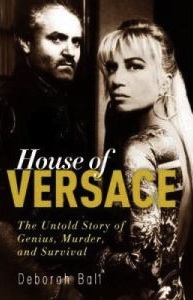House of No Mirth

My sense of the fin-de-siècle years in American pop culture and the decades leading up to them is that the reactionary ‘70s were followed by an era of escalating exuberance—one barometer of that was the burgeoning importance of design and designers, in fashion, interiors, and consumer goods. In the ‘80s, it was Fiorucci and Calvin Klein, Interview magazine and American Gigolo. In the ‘90s it was about Vanity Fair, Armani and Versace, and movies as video-game spectaculars.
The Versace story has particularly compelling narrative features as Deborah Ball, a former Wall Street Journal Milan correspondent, lays out in House of Versace: The Untold Story of Genius, Murder, and Survival (Crown). It’s a rags-to-riches account intermingled with the prolonged front-page story of Gianni Versace’s murder, mixed in with internecine machinations worthy of the Borgias.
One example of the Versace mindset was Donatella Versace’s dictate that her slain brother be accorded a royal funeral, held in the Duomo di Milano (the Milan Cathedral) and attended by the world’s fashion A-list—Princess Diana, Elton John, Carla Bruni, Naomi Campbell, Carolyn Bessette-Kennedy, Anna Wintour, and such.
Ball, of course, interviewed all the usual suspects and then some, and elaborately details the complications manifest in Gianni’s sister’s assuming the reins of something as evanescent as a fashion brand—her battle with drug addiction, ongoing family conflicts, and the questions of what Gianni Versace (in the case of his demise) intended for the future of the house he built. It is, as a guilty pleasure, a riveting story.
You can almost feel the dull, pounding disco beat and see the anorexic rag dolls strutting down the runway, attended to by all manner of media nitwits who think asking some celebrity, “Who are you wearing?” passes for news.
